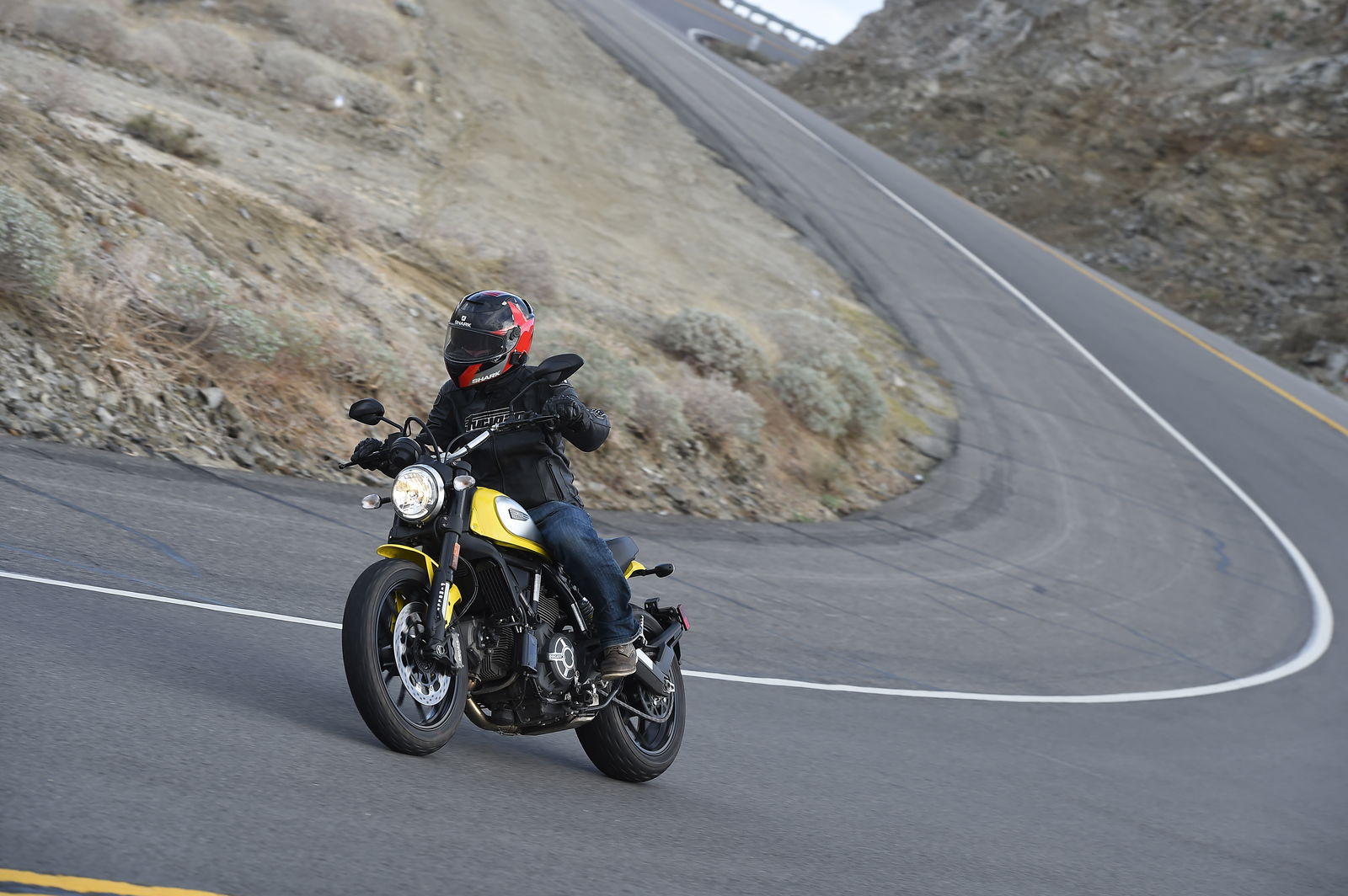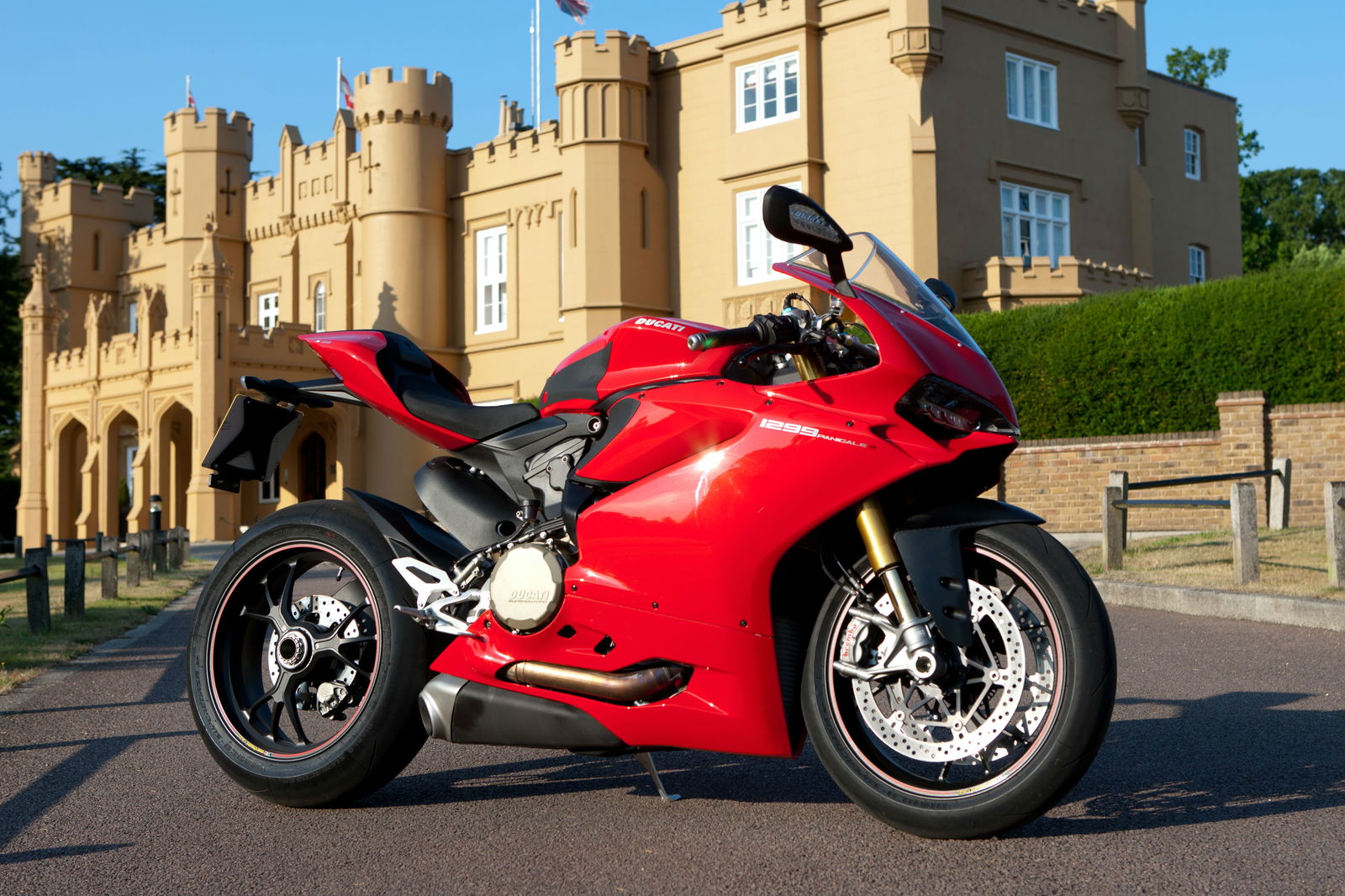2015 BMW S1000 RR review
The 2015 BMW S1000 RR is wildly fast and yet completely manageable, even on greasy UK roads in the middle of winter.

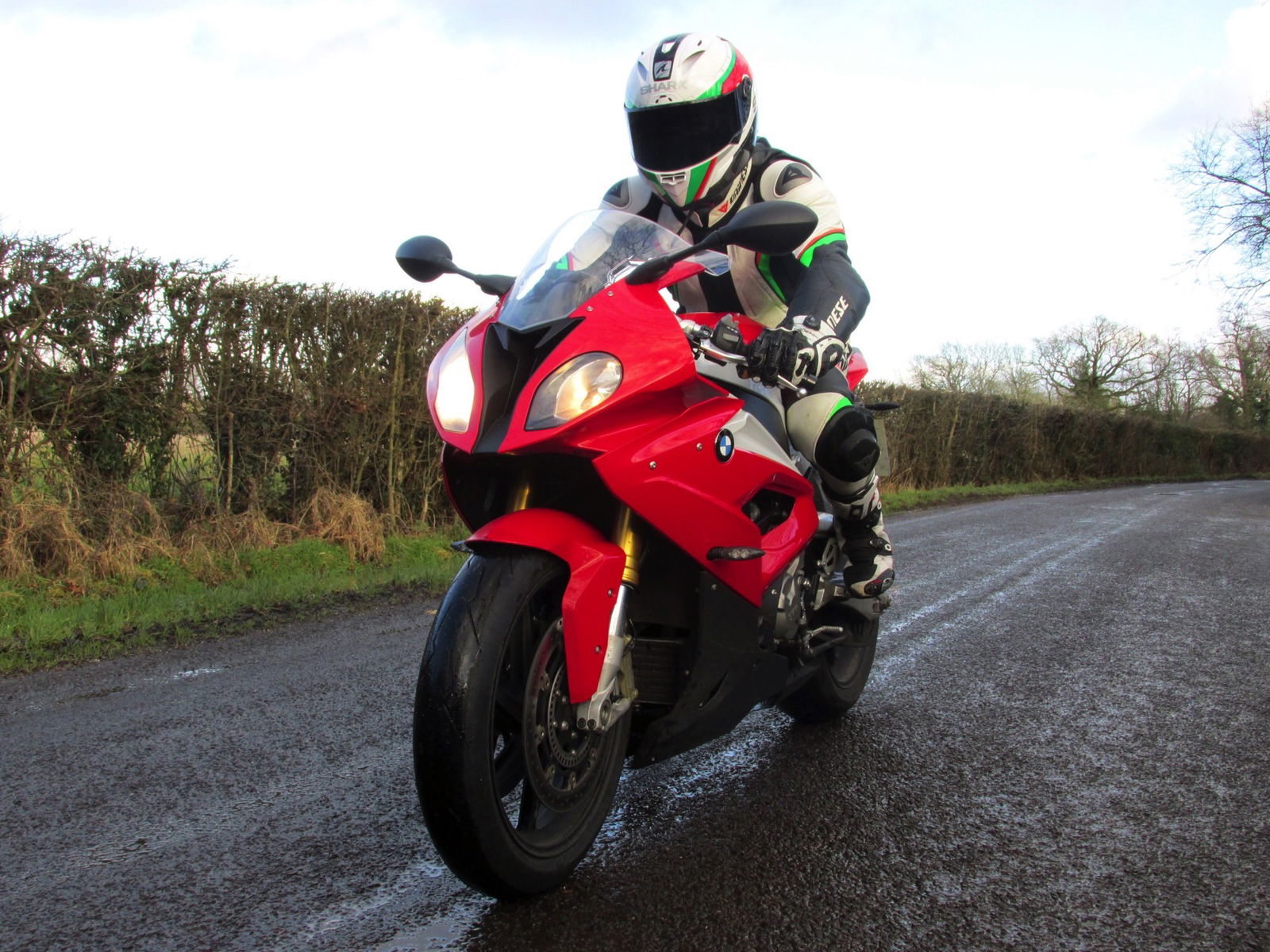
Is 200hp simply too much for the road? There’s a question you’ll never get a conclusive answer to. Just short of that immense power figure is the 2015 BMW S1000 RR - it produces 199hp, has electronics that make better decisions than I do, and, if you’re partial to a bit of asymmetry, looks the business too.
The 200hp question is one that will pop up a fair few times over the next 12 months, given that 2015 sees the release of 200hp superbikes from Ducati, Aprilia, Kawasaki and Yamaha.
Watch our 2015 BMW S1000 RR road test:
2015 BMW S1000 RR first ride
Words by Roland Brown
This is not merely an updated bike like the 2012 model. It’s a comprehensively redesigned machine whose significance is emphasised by those asymmetrical headlights being swapped, with the larger dip beam moving to the right. And after a day spent caning it round the Monteblanco circuit in the south of Spain, there’s no doubt that it’s another significant step forward.
Apart from that reversed headlight arrangement this BMW S1000 RR looks very similar to the old model, but all the bodywork is new, including the tail section, which is sharper and more upswept. The handlebars are 5mm wider. The screen is reshaped for improved aerodynamics and sits above a new instrument panel.
Updates to the 999cc engine include a new cylinder head with new intake cam and lighter inlet valves. A bigger airbox, shorter intake trumpets and a redesigned exhaust also contribute to the 6hp power boost to 199hp at 13,500rpm. Torque is considerably increased through the mid-range although the peak of 83lbft at 10,500rpm is up by just a fraction.
Chassis changes include a new, lighter frame with revised stiffness and revised rake (one degree steeper at 23.5 degrees), trail (reduced by 1.5mm to 96.5mm), wheelbase (8mm longer, at 1425mm) and swing-arm pivot location (3mm lower). Suspension rates at both ends are tweaked, and the RR now gets the option of Dynamic Damping Control semi-active suspension.

This is an improved version of the DDC pioneered on the HP4, taking lessons from racing, according to RR project leader Rudi Schneider. He said: ‘We learned about the suspension in our chassis department and also at the racetracks. We worked most closely with Wilbers team and the Italian Superbike team, who were both using the semi-active all through the [last] season.’
Predictably the DDC is just one of a long list of options and accessories. For the UK, BMW has made things slightly simpler by specifying two distinct models. The basic S1000RR, which costs £13,700, includes Race ABS, the basic ASC stability control, and three riding modes (Rain, Sport and Race). The S1000RR Sport costs £14,760 and adds Dynamic Damping Control semi-active suspension, Gear Shift Assist Pro quick-shifter, plus heated grips, LED indicators and a colour-matched pillion seat cover.
The test bike I rode was the Sport edition and also fitted with the optional £490 Race Package, comprising the more sophisticated DTC Dynamic Traction Control, cruise control, and an extra, customisable Pro riding mode. The Pro riding mode actually consists of two extra modes: the more track-focused Slick mode plus a User mode, allowing a rider-defined set-up of throttle response, suspension settings and more.
Disappointingly I didn’t have to worry about that to start with, because the first track session was damp so I started in Rain mode, cutting power to a far-from-feeble 187hp. Even so, its softer throttle response helped make re-learning the damp circuit almost ridiculously easy. The RR’s ABS-enabled brakes helped me gauge grip levels, as did the improved DTC traction control system that smoothly moderated the power — before unleashing all 187 horses on the main straight once the bike was sufficiently upright.
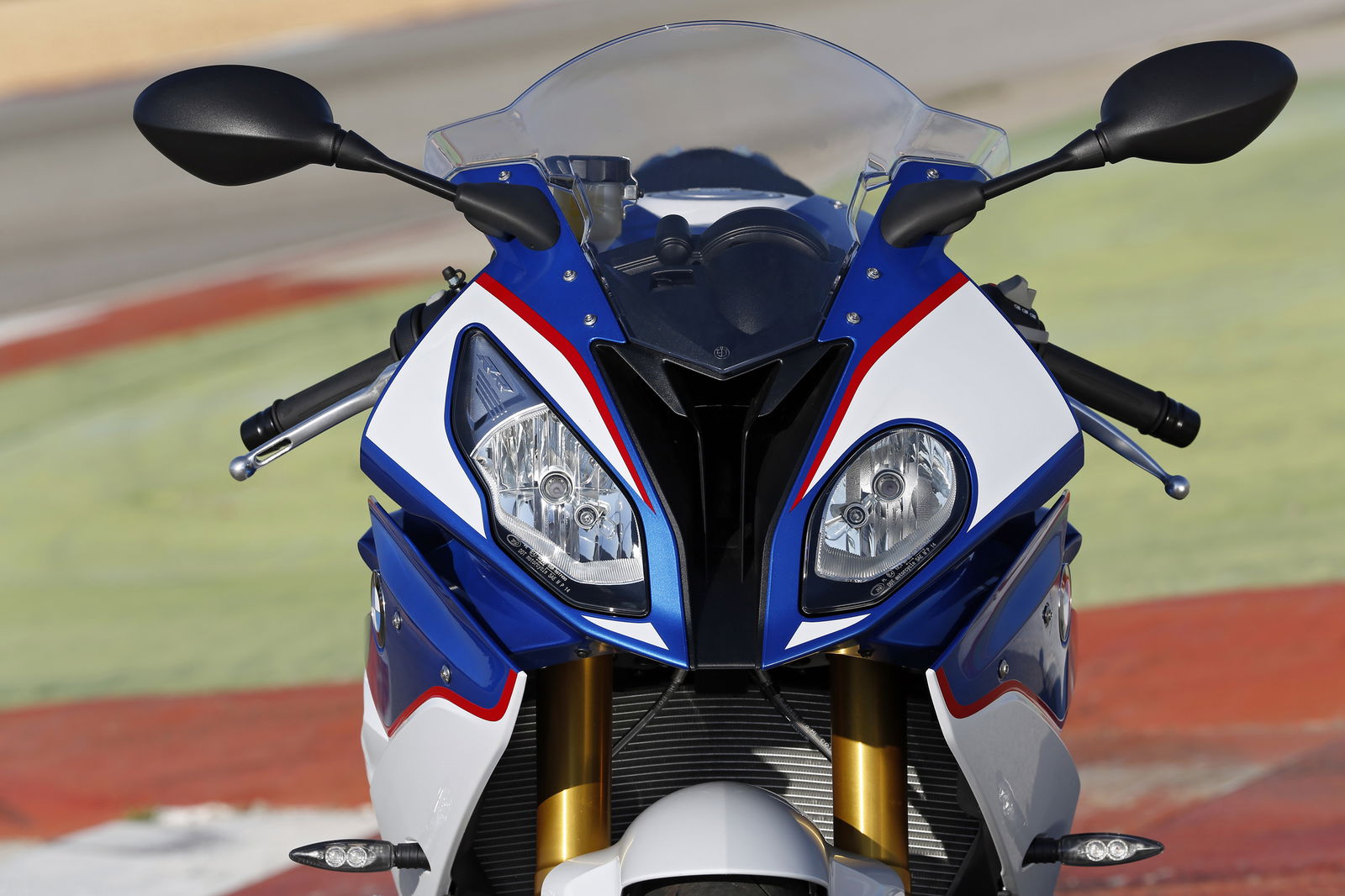
Then when the track had dried for my second session, selecting Race mode with a press of the handlebar button instantly firmed up the suspension, restored the full 199hp and turned the RR into an awesomely fast and sharp-steering weapon… which was outperformed only when I pressed the button again to select Slick mode. That firms the suspension still more, disables the linked braking system (which adds a touch of rear when you squeeze the handlebar lever) and enables bar-mounted buttons for adjusting the traction control on the move.
Of course the RR is brain-numbingly fast; it was still pulling hard in fifth at over 150mph on the longish pit straight, when I had to haul on the fearsomely powerful Brembos for the following second-gear right-hander. But it was the BMW’s controllability and ease of use even at those extreme speeds that made the biggest impression.
With slicks fitted for my last two sessions, braking power was outstanding. The ABS system worked remarkably well even when the Brembos were burying the front slick in the track when slowing for the tight first turn. The semi-active suspension firmed-up the front end under braking and the rear under acceleration, helping to keep the bike well balanced and stable, yet also dealing effortlessly with occasional bumps. And the traction control worked so seamlessly that this most powerful of bikes was also remarkably rider-friendly.
The updated DTC traction control now gives a more refined response and, in Slick and User modes, allows easy tuning through 15 settings by pressing a thumb button on the left bar, as with many top race bikes and Aprilia’s RSV4. Even on its higher settings the system cut in smoothly and restored full power seamlessly on straights, so I sometimes couldn’t tell when it was working. But it’s an excellent system, whatever your level of experience and speed.
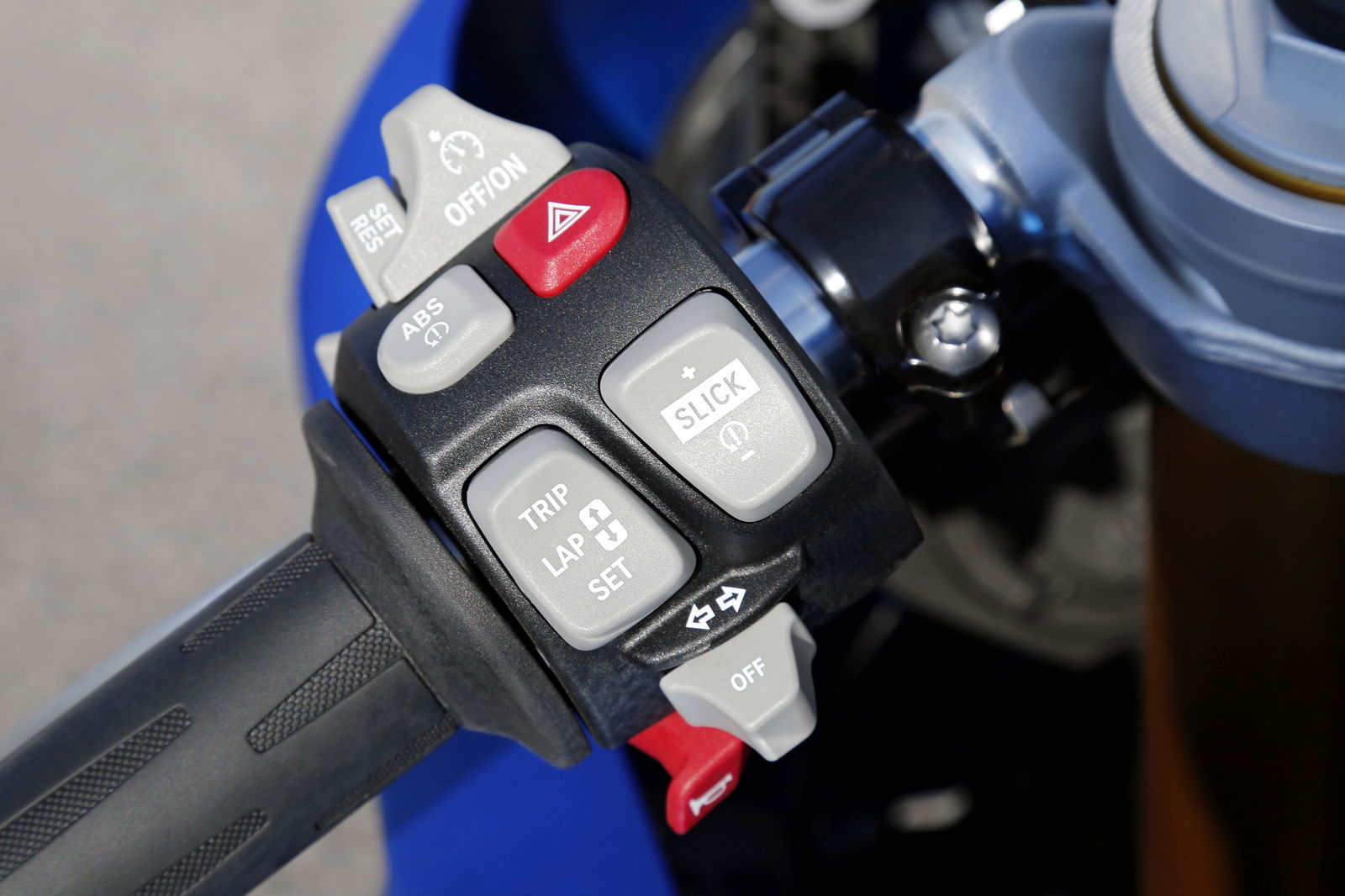
I was surprised by how useful I found the Gear Shift Assist Pro, which allows clutch-less changes up and down the box. This worked flawlessly, in combination with the slipper clutch, and I found it helped by allowing me to concentrate on corner entry without needing to think about down-shifts. Another rider reported a slightly slow and imprecise change but my bike was fine all day. The gear lever can also be very quickly reversed to give a race-shift pattern.
Other electronic updates include a high-tech instrument panel showing maximum lean angle, current and maximum deceleration rate and number of gear changes per lap. It also gives you an indication of traction control intervention, with the maximum amount by which the system has reduced torque on each lap.
For track use there’s a launch control and a pit-lane speed limiter that you could also use for fun on the road. This track-ready machine is rider-friendly enough to make an excellent if slightly excessive street bike, especially when fitted with options such as cruise control and heated grips. Thanks to the semi-active suspension it should even be comfortable, at least by sports bike standards.
This bike’s Continental anti-lock brakes don’t incorporate the cornering ABS of the HP4’s Bosch system, one respect in which even this accessorised S1000RR doesn’t quite match its more exotic forebear.
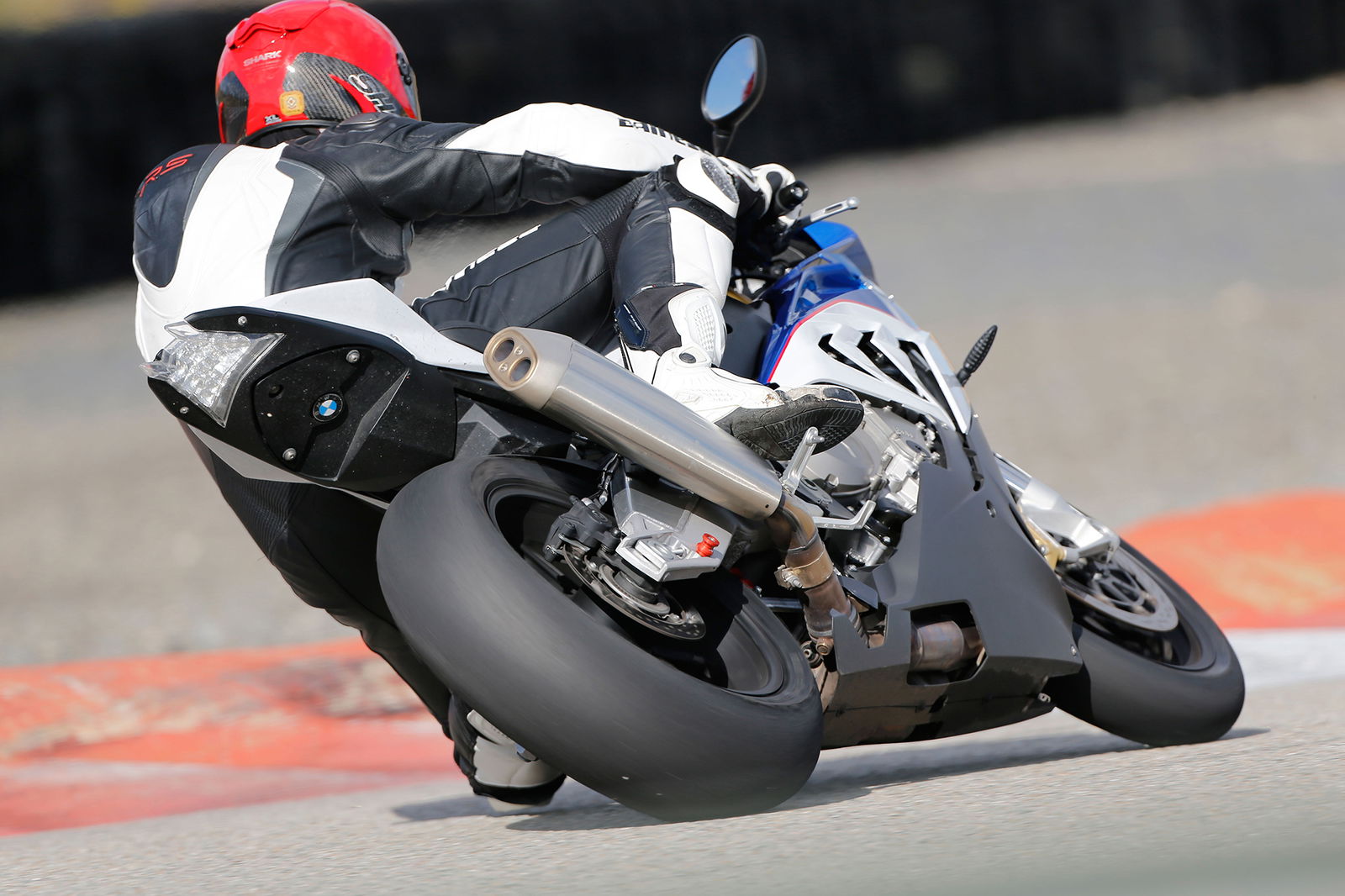
But that disadvantage is a rare one. Perhaps the most impressive aspect of the S1000RR is the way in which this updated model surpasses not only its RR predecessor but the HP4 flagship too (at least when fitted with its main options). Test rider Jürgen Fuchs is a second quicker around a typical racetrack on the new RR than on the HP4, according to project leader Schneider.
Inevitably the high-tech options elevate the S1000RR’s price, with the Motorsport-coloured test bike’s value topping £15,500 even before the addition of a grand’s worth of forged wheels. Then again, the superbike class seems to have moved on in price as well as specification this year, with the new crop of 200hp flagships providing levels of performance and technology that would have seemed impossible on the original RR’s launch five years ago.
BMW has certainly chosen the right moment for this update, which could well be enough to retain the S1000RR’s status as class yardstick. With the challengers’ launches imminent, it’s too soon to say. What’s for sure is that this revamped RR is a stunningly fast, sophisticated and useable machine that will be very hard to beat on either road or track.
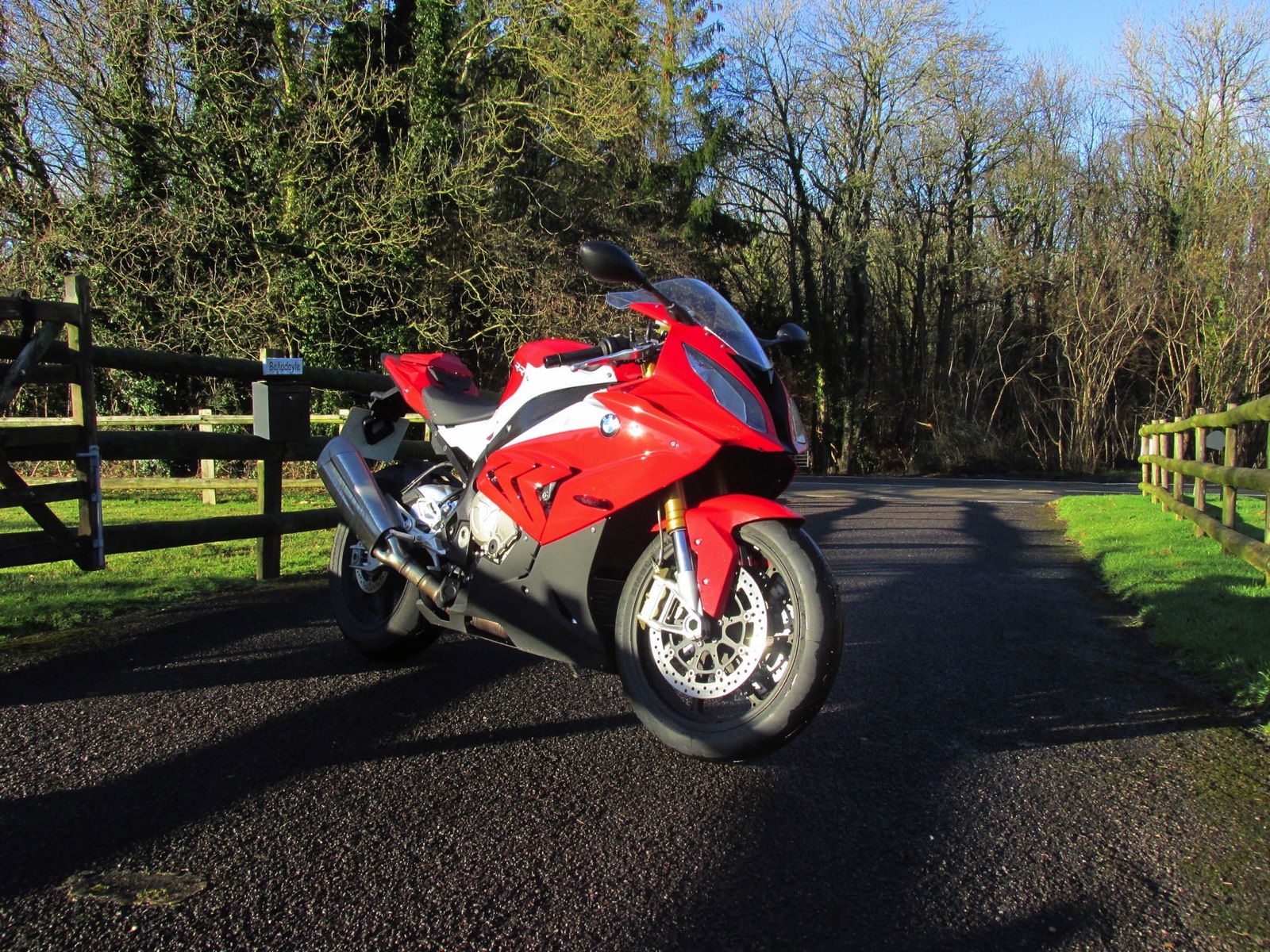
2015 BMW S1000 RR road test
So the S1000 RR is blisteringly quick around a dry test track in Spain, but what’s it like on UK roads? Greasy winter roads where grip is non-existent and every leaf-covered corner looks like a low-side boobytrap.
Our test bike was the Sport edition. It costs just over £1,000 more than the basic version but comes with electronic suspension, extra riding modes, a quick-shifter, heated grips, LED indicators and a seat cowl.
I’m a big fan of sports bikes but I tend to prefer two-cylinder to four-cylinder models. The former tend to be more compact and a lot narrower, which I like. Sitting on an old GSX-R1000 is like trying to wrap your legs around an oak tree.
But there’s none of that with the new S1000 RR. I don’t know how BMW has managed to keep it so narrow but it’s no different in shape to a modern supersport. The tank doesn’t splay out your legs and there’s no protruding fairing getting in the way.
It handles like a 600cc sports bike too. You don't need to fight it into corners, turn-in speed is exceptionally quick thanks to a steeper rake and it’s not at the expense of stability either. There’s very little headshake or movement under power, just drive from that 190-section Pirelli Diablo Supercorsa. Well, when it’s dry, anyway.
You see, I’ll never understand why new bikes aren’t offered with a choice of tyres. The S1000 RR may be a weapon on track and have silly amounts of power, but it’s no good if you can’t actually lay it down. Even in rain mode where power is reduced and delivery is significantly softer, the rear was lighting up coming off roundabouts under even moderate acceleration in the wet. Pirelli Supercorsas: awesome on a track day, complete cack in cold weather, even worse in the wet.
A smart feature that does work is BMW’s new Gear Shift Assist Pro. It lets you hook both upshifts and downshifts without so much as breathing on the clutch lever. It may be aimed at track riders looking to scrape a tenth off their personal best but I think its real strength is how it helps to keep the bike stable.

It’s like handing clutch and gear lever duties over to Marc Marquez whilst you concentrate on braking. Seamless upshifts every time and perfect throttle blips on downshifts. It might feel like cheating but it’s certain to make you a smoother, if not faster rider, by removing jerky inputs that unbalance the bike.
The gearbox is quick and precise too but I couldn’t get used to the soft feel and minimal amount of travel in the gear selector. Downshifts felt odd to me, as though I was pushing my boot into sand, instead of feeling a definitive clonk as the bike selected a new cog. Occasionally I’d have to look down at the digital gear indicator on the dash to see if the transmission had actually shifted.
That, or I’d listen for a change in engine note booming from the S1000RR’s new exhaust, which happens to sound unbelievably good. In a world where aftermarket exhausts can easily cost £1,500 for a full system, it’s nice to see a stocker pumping out some proper noise. It’s got a hollow whir that changes into pops, bangs and burbles as you downshift and leave it on the overrun. I even caught a young boy in the back of a car pointing at his ears and giving me a thumbs up. I took that as code for ‘wheelie...now please’ - the bike duly obliged.
The old S1000 RR engine is praised for its endless amount of power, but it now makes 6hp more and has a dollop of extra torque in the mid-range too. Acceleration in third and fourth gear pulls much the same as a 600cc in first gear, while pinning the throttle in first and second verges on scary. With only 700 miles clocked on our test bike, it could get even faster as the engine loosens up with mileage. It's not unknown for used S1000 RRs with 5,000 miles on the clock to make around 5hp more than new ones.
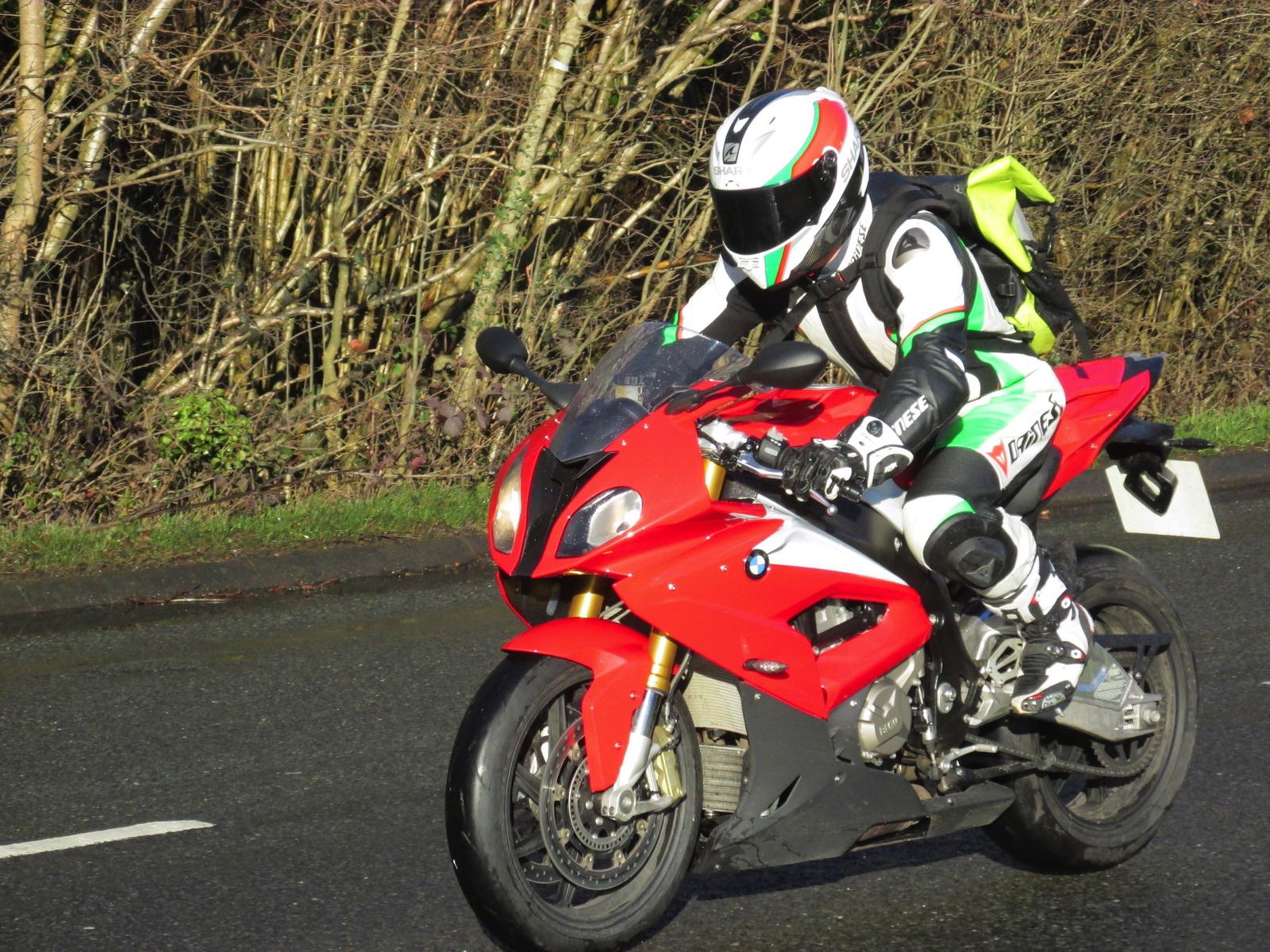
There's no need to ride this bike like a hooligan to go fast. The engine is strong and smooth enough to pull from sixth at low speeds and the electronic suspension, while firm, offers perfect damping on sketchy roads. In fact, before paying £13,700 for the basic version, I’d beg, borrow and steal to find the cash for the Sport. It will be easier to flog if you ever decide to sell and the electronic suspension and Gear Shift Assist Pro are more than worth the extra cost.
In common with almost every modern sports bike, the ABS-equipped four-piston brakes are powerful and only require one finger on the lever most of the time.
One thing that puzzled me was the lack of a proper fuel gauge - you get a residual range reading but you have to cycle through the display using the left hand switch gear to find it. It just seems an odd feature to leave out when things like launch control and a pit lane speed limiter make the cut. Still, there's no need to panic over running out. The low fuel warning light came on after 95 miles of normal riding and the onboard computer showed the 17.5-litre tank still had another 40 miles in reserve.
After several days of riding the 2015 S1000 RR, I couldn't help but think of it as the two-wheeled equivalent of the Bugatti Veyron: wildly fast and yet completely manageable. The comfortable riding position, light throttle with perfect response and heated grips make me want to call it civilised too.
So is 200hp too much for the roads? I don't know...199hp seems absolutely fine though.
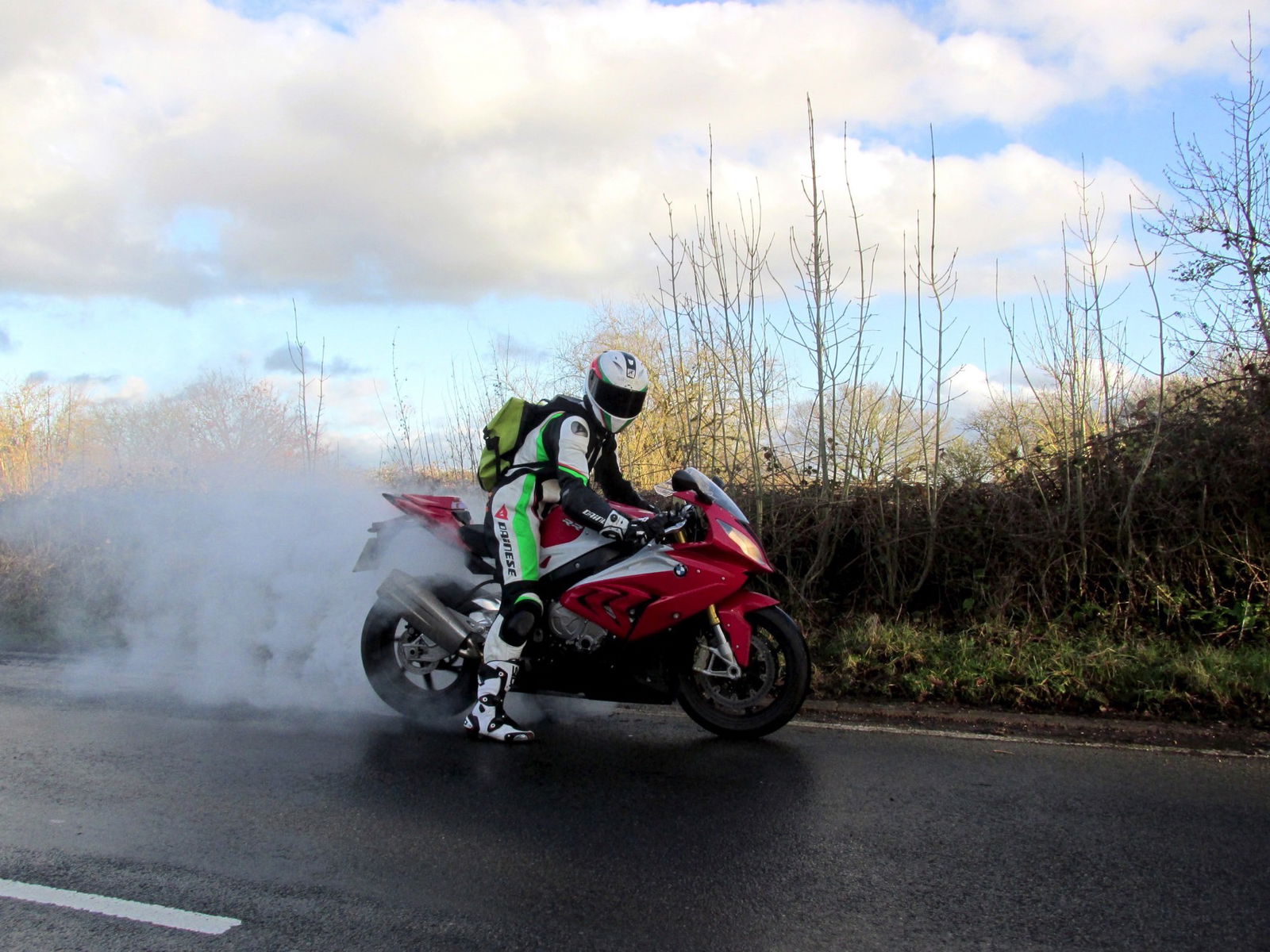
2015 BMW S1000 RR specs
- Model tested: 2015 BMW S1000RR Sport
- Engine: 999cc inline-four
- Price: S1000RR Sport £14,760 (standard RR £13,700)
- Power: 198hp
- Torque: 83lbft
- Wet weight: 204kg (full tank)
- Tank capacity: 17.5 litres
- Seat height: 815mm
- Available: dealer launch February 7th
